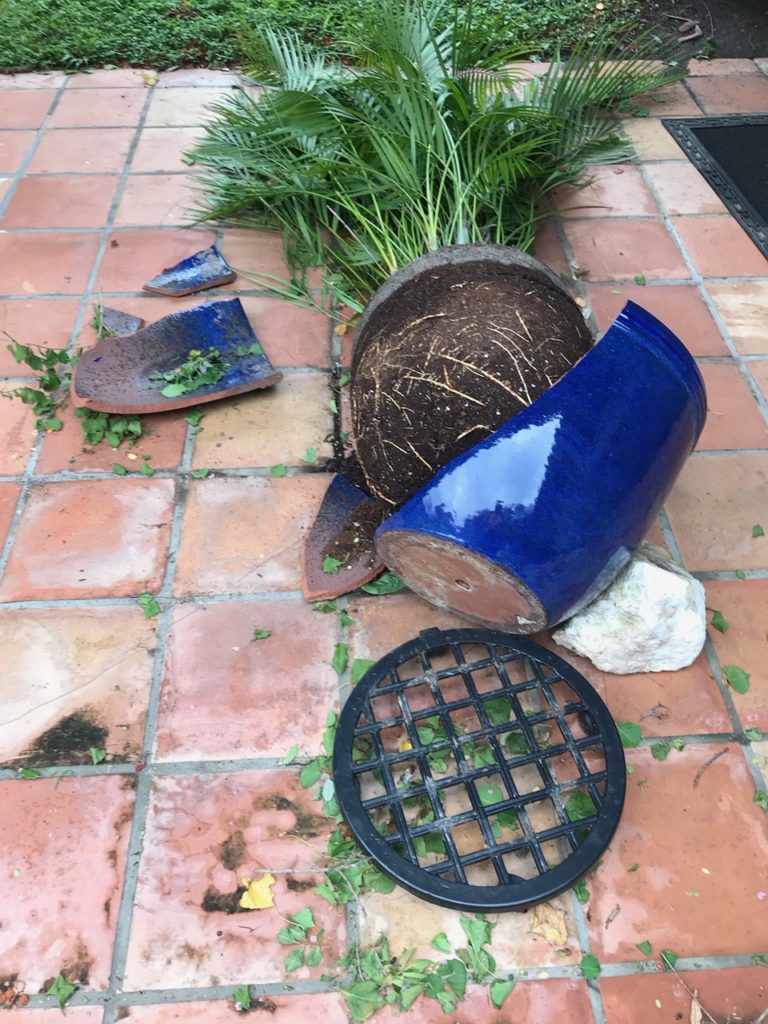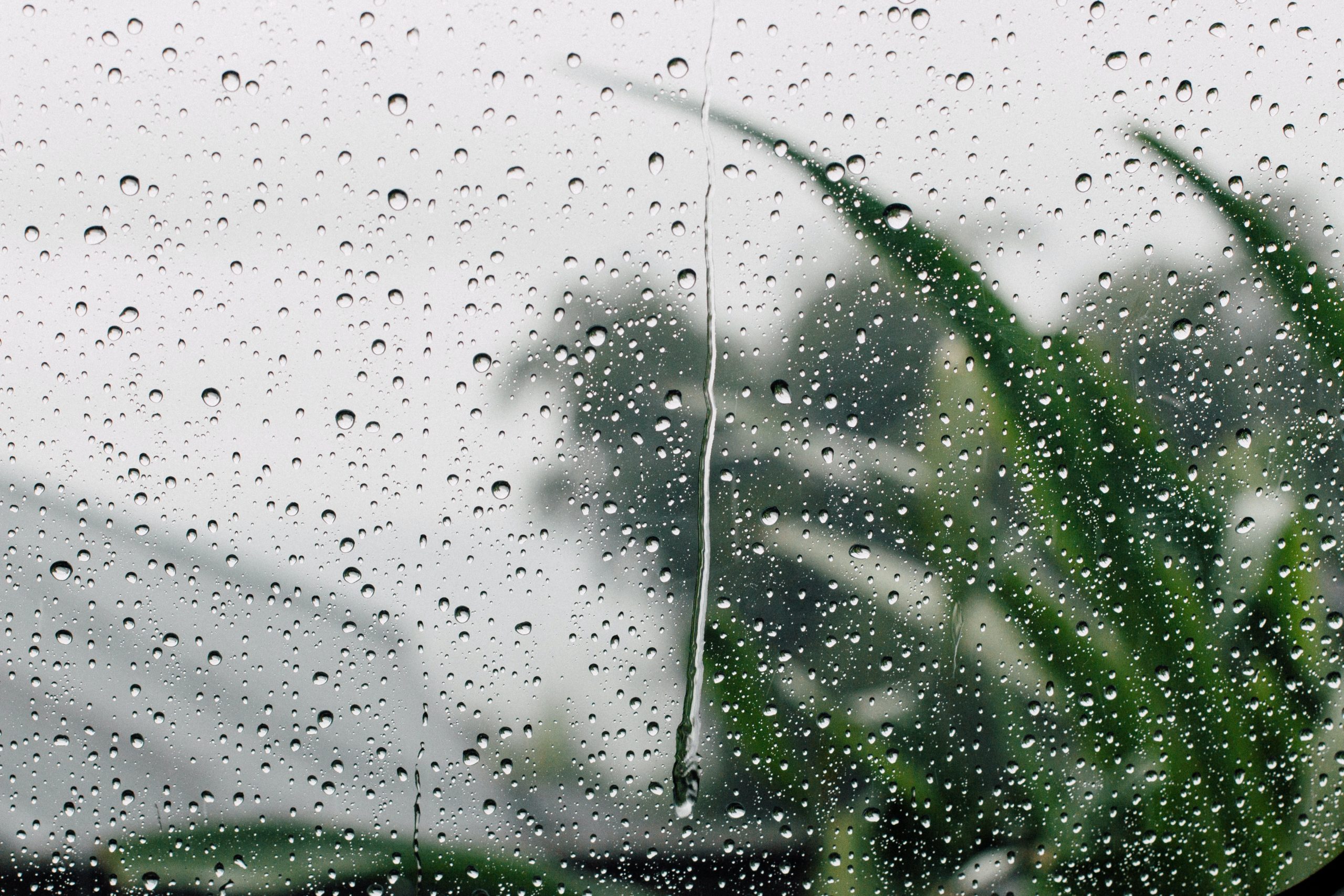Now that we’ve weathered our first big storm this season, we’re cleaning up and thinking about how to be better prepared next time. Here are some important tips for keeping your landscape storm-ready.
Trim Your Trees
Remove dead or rotting tree limbs, brown palm fronds, and even healthy limbs that pose a threat to homes, other structures, people, or traffic. Do not remove healthy tree limbs or green palm fronds that are not a hazard; excess vegetative removal is detrimental to plant health. Try to do this far enough ahead that limbs are removed from property well ahead of a windstorm. A good habit is to trim trees once a year, that way you don’t need to scramble when a storm is coming.

Protect Potted Plants
Move potted plants inside the garage or other protected area, especially those with delicate structure or foliage. If they are too heavy or not enough room, move them into a corner, or behind hedges, and tip them over (water first so soil is heavier). Of course, also stow away lawn furniture, bird feeders, wind chimes, bbq pit, etc.
Keep Storm Water Flowing
Clean gutters, clear downspouts, do drainage repairs as necessary, including digging/cutting drainage swales and removing any impediments to drainage. Double check that drainage paths are clear to speed runoff of storm water. We often find stacks of bricks, lumber, firewood, etc. placed where they prevent fast water flow out to the front yard.
What About the Lawn?
Remember to shut off sprinkler system. If we are likely to get excessive rain, don’t start with saturated soil. Mow the lawn. It may be awhile before you can mow it again, plus water runoff flows faster with short grass, and short grass makes it easier to rake up debris after the storm.
Assess Your Trees and Plants After the Storm
Start by clearing streets of broken branches and straightening small trees that have become tilted, if feasible. If you need guidance on which trees or plants can be saved and what should be removed, call a trusted tree care professional or garden center. We can help save you time and effort.

-James



John Dechant says
The best course of action at this point is to clean up debris and remove broken or heavily damaged limbs and plants. For larger trees that cannot be safely accessed with home equipment, call upon a professional arborist. Look in the local phone directory under “tree service”. It is wise to get several estimates and references from others who have used the tree service before signing a contract for work. Thank you for this post about the tips.